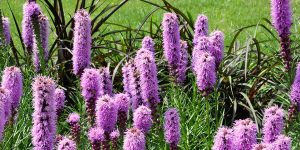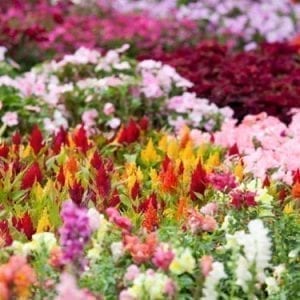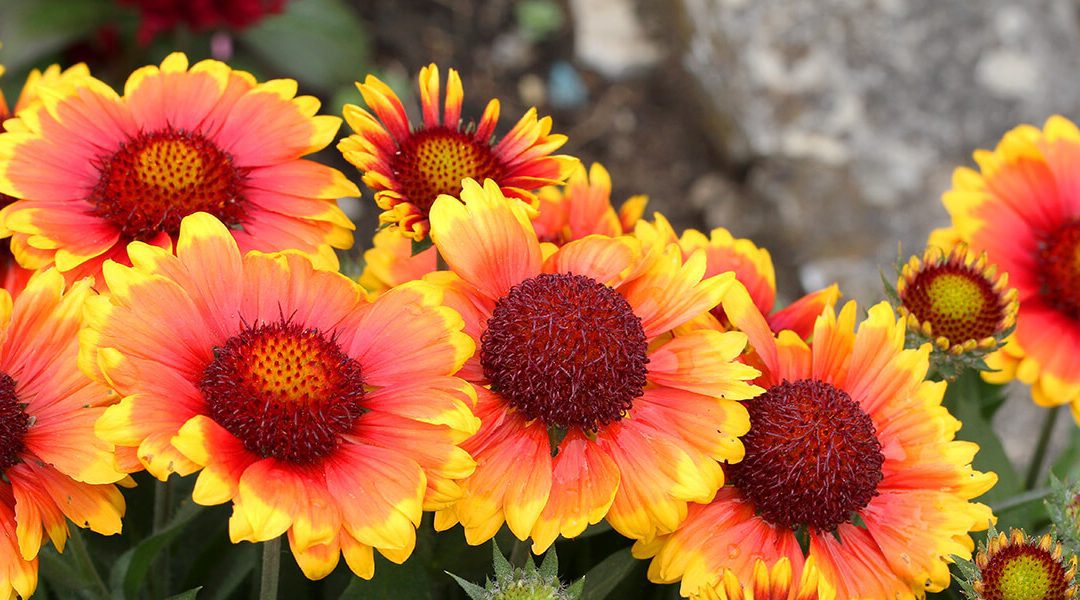Choosing between annuals and perennials comes down to more than just plant preferences, it shapes how your garden grows, evolves, and flourishes through the seasons. Picture bold, bright blooms popping up all summer, only to say goodbye come fall. Now imagine another space where color returns every year, steadily growing stronger over time.
These differences affect everything from your planting schedule to your garden’s long-term character. Some gardeners crave fresh changes and seasonal splashes of color, while others prefer the reliability of plants that come back stronger each spring. There’s no one-size-fits-all answer, but understanding how each option fits your gardening style can help you grow something truly rewarding.
Perennials vs. Annuals – What’s the Difference?
Every garden benefits from a good understanding of plant life cycles. At the core of most garden planning are perennials and annuals; two categories that influence how and when your garden blooms, how much maintenance it needs, and what kind of impact you can expect across the seasons. Some plants return each year on their own, while others grow quickly, flower beautifully, and fade out when the season ends.
The choice between the two often comes down to how much change you like, how much time you want to spend replanting, and what kind of visual interest you’re aiming for. Some people like the ease of having familiar plants reappear each spring. Others enjoy picking new favorites every year for fresh pops of color. Understanding how these two plant types work will help you make smarter decisions when it’s time to fill out your garden beds or refresh your containers.
Perennials
Perennials are long-lasting plants that grow back on their own each year. Once planted, they develop a strong root system that survives through winter and sends up new growth each spring. In northern Illinois, where winters can be harsh, cold-hardy perennials like daylilies, hostas, and black-eyed Susans are especially valuable. After a few seasons, many perennials even begin to spread or fill out, giving your garden a fuller, more established look without having to start from scratch each spring.
Their bloom time might not last all season, but the payoff is a lower-maintenance garden over the long run. Many perennials also serve as anchors in garden beds, offering dependable color and form that you can build around with other seasonal plants.
Annuals
Annuals grow fast, flower heavily, and wrap up their life cycle in one growing season. You plant them in spring, they bloom steadily through summer, and once fall frost sets in, they’re done. Because they don’t need to store energy for future seasons, they tend to produce more flowers in a shorter span.
Common favorites like petunias, marigolds, impatiens, and zinnias are easy to plant and offer big color impact. They’re perfect for hanging baskets, containers, and areas where you want bright, changing displays from year to year.
Benefits of Planting Perennials
 Planting perennials is a smart way to build a garden that improves over time. These plants become more resilient as they mature, often requiring less attention and fewer resources than annuals once they’ve settled in. Instead of needing to replant every spring, you get the reward of watching your garden return naturally, saving both time and money in the long run.
Planting perennials is a smart way to build a garden that improves over time. These plants become more resilient as they mature, often requiring less attention and fewer resources than annuals once they’ve settled in. Instead of needing to replant every spring, you get the reward of watching your garden return naturally, saving both time and money in the long run.
One of the biggest perks of perennials is their ability to create a consistent, reliable framework in your yard. They help define space and give the garden a sense of rhythm and predictability. Many varieties also attract pollinators like bees, butterflies, and hummingbirds, especially native perennials that evolved alongside local wildlife. That means your garden isn’t just more beautiful; it becomes more alive, season after season.
Over time, mature perennials often grow fuller, producing more blooms and, in some cases, new offshoots you can divide and plant elsewhere. This natural expansion lets you multiply your plantings without needing to buy more each year. For gardeners on a budget or anyone looking to stretch the value of each plant, this is a major win.
Perennials also tend to be more drought-tolerant once established, thanks to their deeper root systems. That’s especially useful in the hot, dry stretches of Illinois summer, when regular watering becomes more of a chore. A well-chosen mix of perennials can help keep your garden thriving through challenging weather with less effort on your part.
Seasonal interest is another big bonus. While individual plants may not bloom all season, choosing a variety of early, mid, and late bloomers can give you color and texture from spring through fall. You’ll also find a wide range of foliage types, from the bold leaves of hostas to the fine textures of ornamental grasses, giving your beds visual depth even when flowers aren’t in bloom.
For gardeners who like a steady rhythm and long-term payoffs, perennials offer lasting beauty, reduced upkeep, and a strong foundation that only gets better with time.
Benefits of Planting Annuals
 Annuals offer unmatched flexibility and creative freedom for gardeners who like to switch things up. Every growing season is a fresh start, which makes them perfect for experimenting with new color palettes, flower combinations, and plant placements. Want a red-and-yellow combo one year and a cool blue-and-white scheme the next? Annuals let you change your entire garden’s look without being locked into long-term commitments.
Annuals offer unmatched flexibility and creative freedom for gardeners who like to switch things up. Every growing season is a fresh start, which makes them perfect for experimenting with new color palettes, flower combinations, and plant placements. Want a red-and-yellow combo one year and a cool blue-and-white scheme the next? Annuals let you change your entire garden’s look without being locked into long-term commitments.
Another standout feature of annuals is how quickly they take off. Many varieties go from seed or starter plant to full bloom in just a few weeks. That quick turnaround is great for filling in gaps or boosting curb appeal right before a big summer gathering. They’re a reliable way to get fast results, especially if a perennial bed needs a little extra punch while the slower growers catch up.
For gardeners working in smaller spaces, like patios, balconies, or even window boxes, annuals are often the go-to. Their shallow root systems make them especially well-suited to containers, where they can thrive in tight quarters and still produce a lush, full appearance. Hanging baskets, planter boxes, and decorative pots all benefit from their vigorous growth and dense blooms.
Annuals also make excellent fillers and accents. They can be tucked between shrubs, used to edge a walkway, or planted in mass for a bold, colorful effect. Since they’re short-term guests, there’s no worry about them outgrowing their spot or disrupting your garden’s long-term plan.
Many annuals bloom right up until frost, keeping beds vibrant into late fall, long after some perennials have faded. This extended performance makes them an excellent way to stretch the garden’s visual appeal deeper into the season.
And for anyone new to gardening, annuals are incredibly beginner-friendly. They’re generally low-cost, easy to find, and forgiving to work with. Success comes quickly, which makes them a great choice for kids, new homeowners, or anyone trying their hand at gardening for the first time.
Fast-growing, full of color, and refreshingly noncommittal, annuals are a go-to option for anyone looking to create a high-impact garden in a single season.
How to Choose What’s Best for Your Garden
Deciding between annuals and perennials really comes down to how you like to garden and what you want your space to do for you. If you’re looking for immediate, vibrant color and the freedom to switch things up each year, annuals are a perfect match. They bring bold energy to containers, patios, and high-traffic areas that need quick visual impact. On the other hand, if you’re after long-term structure, lower yearly upkeep, and a garden that gets stronger over time, perennials are the way to go.
Of course, you don’t have to choose just one. Many of the most beautiful and successful gardens combine both types. Perennials can provide the backbone (steady, reliable, and time-tested) while annuals fill in the blanks (add seasonal drama, or highlight a particular color scheme). This mix keeps things fresh without sacrificing the dependable charm that comes from plants returning year after year.
Take a look at your space. How much sun does it get? How much time do you want to spend planting each spring? Do you want instant results, or are you willing to wait a year or two for a bigger payoff? Your answers will help point you toward the right blend of plants for your needs.
And if you’re not quite sure where to start, or if you’re ready to start digging, stop by Platt Hill Nursery in Bloomingdale or Carpentersville. Our garden experts are here to help you pick the best plants for your space, your lifestyle, and your vision. Whether you’re planting a perennial bed to bloom for years to come or loading up on cheerful annuals for a sunny front step, we’ve got the selection, know-how, and friendly advice to make your garden a true standout.
Explore our Annuals Collection or browse our Perennials Collection online, then swing by the store to see what’s in bloom. Your perfect garden is just a few plants away.


